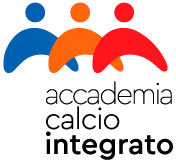10 punti chiave per aumentare la pratica sportiva fra le persone con disabilità.
Catherine Carty, Hidde P. van der Ploeg, Stuart J.H. Biddle, Fiona Bull, Juana Willumsen, Lindsay Lee, Kaloyan Kamenov, and Karen Milton (2021). The First Global Physical Activity and Sedentary Behavior Guidelines for People Living With Disability. Journal of Physical Activity and Health, 18, 86-93
| 10 target areas | Actions needed |
|---|---|
| 1. Awareness | Tailored awareness campaigns are needed to draw attention to the inequity experienced by people living with disability in relation to physical activity. Emphasis on disability as an interaction between a health condition, personal characteristics, and the environment will help reduce exclusion and point to the broad range of sectors and actions that are needed to cocreate inclusive physical activity solutions. |
| 2. Communication | Communication campaigns for promoting physical activity and limiting sedentary behavior need to be targeted at and accessible to people with a wide variety of impairments through a variety of formats and technologies. General communication messages need to avoid ableist language and sentiment and be universally accessible. |
| 3. Environment | Inclusive access to local amenities, facilities, and services, including green spaces, blue spaces, and networks, may require new products, technologies, environmental changes, supportive relationships, and inclusive social attitudes. Safe and connected active transport should be made accessible for people living with disability so that they can participate more independently where they live, work, play, or go to school. This will help limit sedentary behavior and increase physical activity among people living with disability. |
| 4. Training | Training and education providers need to supply inclusive practitioners across sectors that impact physical activity and sedentary behavior to meet the specific needs of people living with disability. Disability awareness training for a broad range of community stakeholders (professionals to volunteers) would build much-needed understanding and help reduce the disabling impact of the social and physical environment. |
| 5. Partnership | Facilitating inclusion in and through physical activity is a whole of society issue. Multidisciplinary partnerships from national policy to local delivery levels are needed to address barriers and facilitators to create opportunities for participation. They must involve disability service organizations and people living with disability. Dedicated disability sport inclusion staff, working with disability organizations, can support the inclusion of individuals with disability in physical activity at community levels. |
| 6. Research | Mechanisms to gather disaggregated data on participation in physical activity, sedentary behavior, and disability are essential to monitor progress in participation on all levels—local, national, and international. An increased volume and quality of research exploring barriers and enablers to physical activity and its effects, along the disability continuum and across the domains of functioning (including life activities and participation), are needed to inform effective inclusive policy solutions and public health interventions. |
| 7. Human rights | Protecting, respecting, and fulfilling human rights with and for people with disability in and though physical activity are critical, including targeted interventions for those enduring intersectional discrimination. Increased understanding of roles and responsibilities pertaining to human rights is needed and must transfer to inclusive actions, advocacy, and investments across multiple sectors. |
| 8. Programs | Community-based physical activity programs need to consider disability-specific accommodations (across fully inclusive to segregated activities) and universal design principles. Facilitating choice in programming is critical, as is the need to provide opportunities to build positive experiences, beginning early in childhood. |
| 9. Investment | Investment is needed across sectors to advance disability inclusion in and through physical activity, in line with human rights obligations. It can be tailored according to means through innovative approaches. Appropriate and effective practical measures, or “reasonable accommodations,” such as assistants, carers, and assistive technologies, should be provided to help people living with disability to be active and to limit sedentary behavior. |
| 10. Governance | Creating inclusive societies requires significant changes at governance and policy levels. Disability inclusion in public health and physical activity should be mainstreamed through policies and legal frameworks. Partnerships, finance, and all relevant organs of society should be mobilized to address disability inclusion. With broad interagency governance structures, physical activity can be a driver of inclusive action in broader society. |





0 Risposte a “Come aumentare la pratica sportiva fra le persone con disabilità”